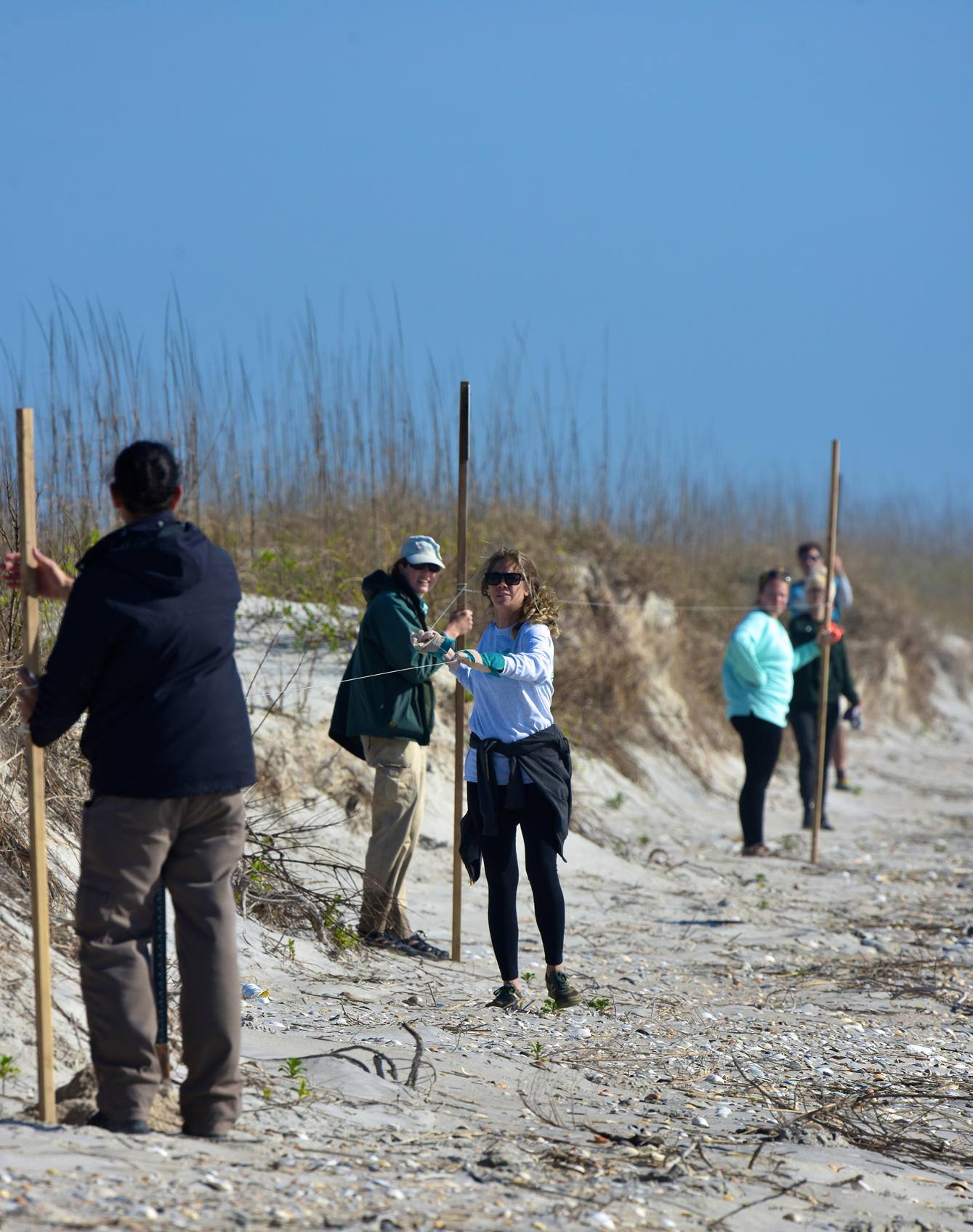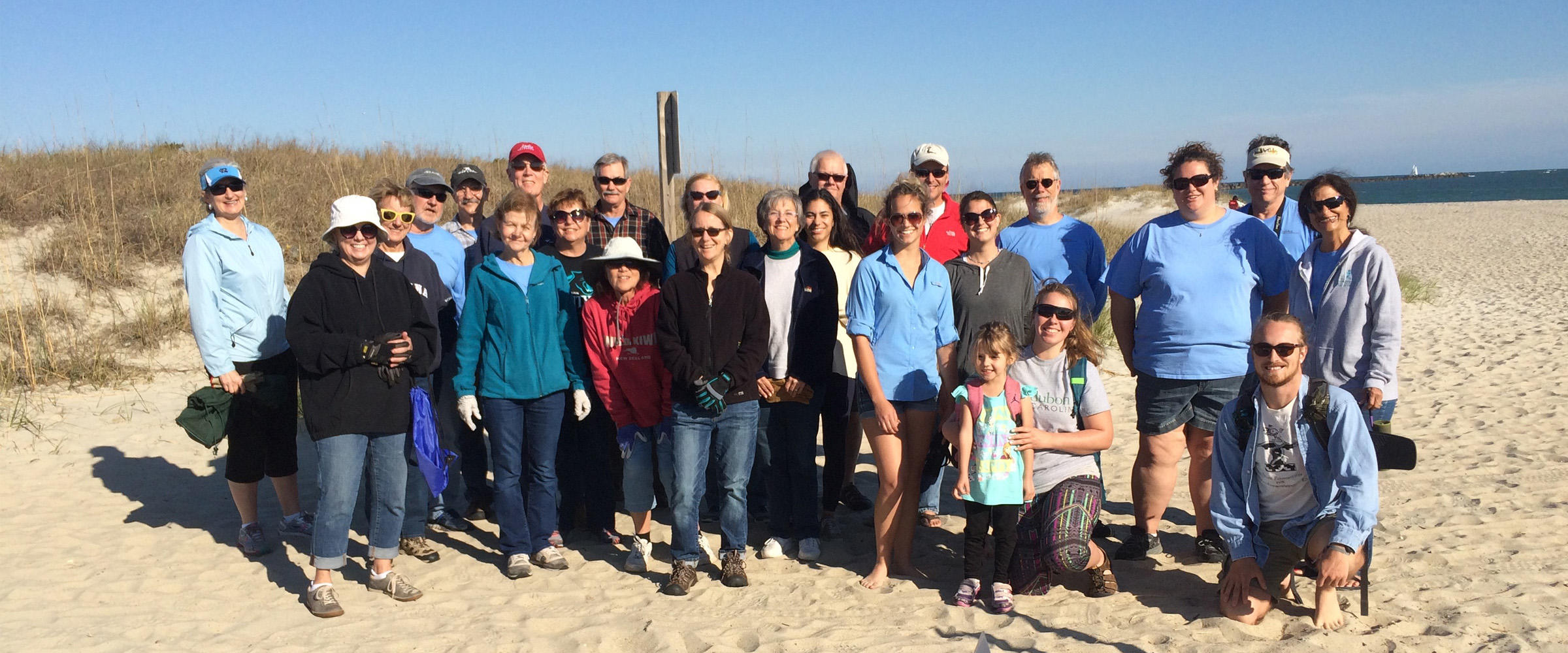Despite chilly temperatures through the month of March, nesting is already getting off the ground for North Carolina’s coastal birds. Across the state, staff from Audubon North Carolina and other agencies that protect nesting birds have been hard at work posting sites to protect them from human disturbance.
At beaches, beach-nesting birds usually receive what’s called symbolic fencing: signs and posts with string tied between them. Though it doesn’t create an impregnable barrier, the signs and the string create a visual barrier while educating beachgoers about the importance of giving nesting birds room on the beach. Signs without string are posted on most estuarine islands that host nesting birds, letting boaters know they aren’t safe places to land.
Signage and string are needed because even though humans usually don’t intend to harm, we are quite frightening to nesting birds! Coming too close to a nesting area will cause the parent birds to flush, leaving eggs or chicks exposed to the elements and to predators.

Audubon staff and volunteers posted our managed sites in March and early April and assisted with posting Masonboro Island, which is part of the National Estuarine Research Reserve System. Groups of up to 20 volunteers helped to dig post holes for the sign posts, carry signs, and place string.
The postings have gone up just in time. Nesting species such as Least Terns and Black Skimmers are starting to arrive at North Carolina’s beaches, and the American Oystercatchers on Masonboro Island have already scraped out nests and are starting to lay their eggs!







